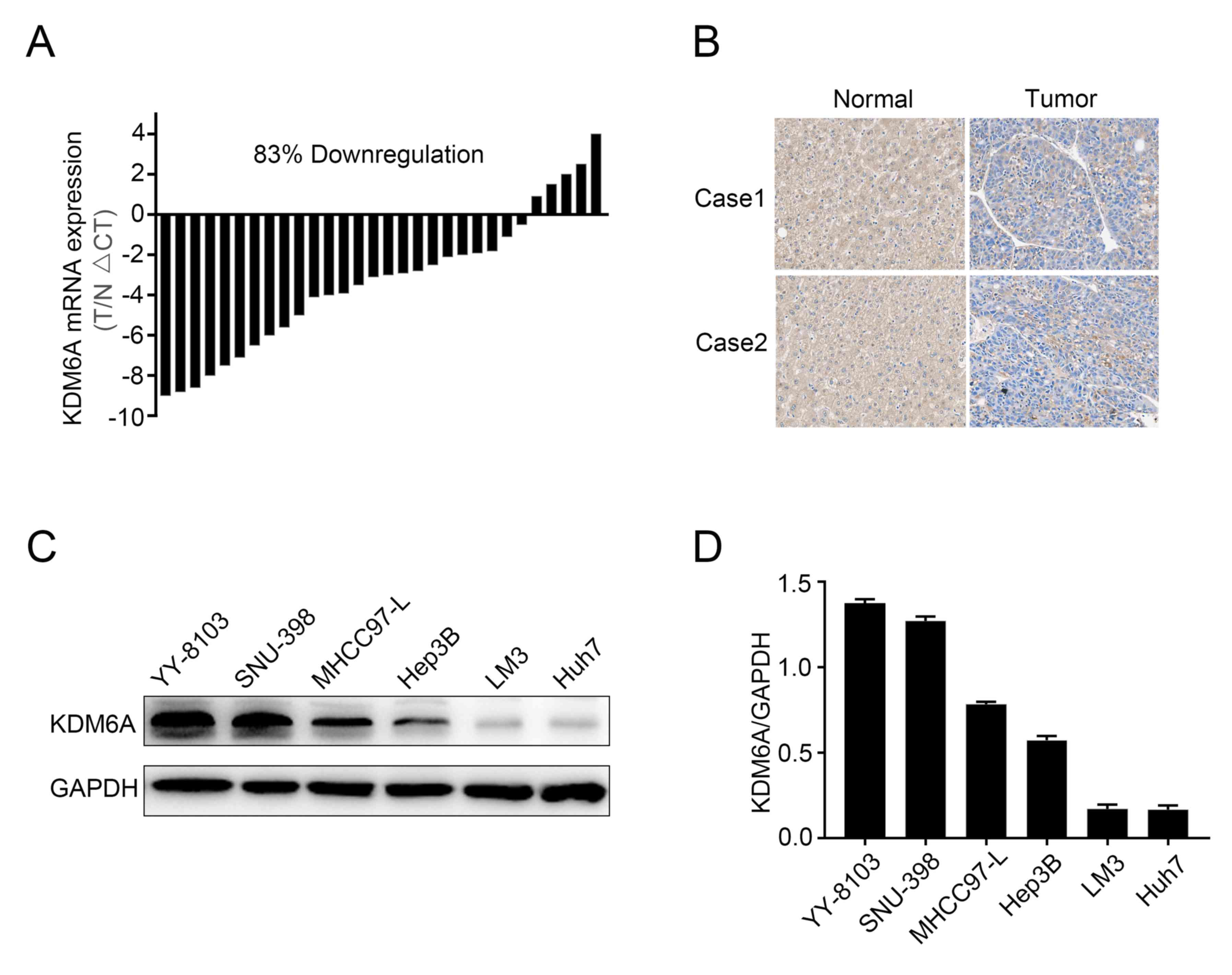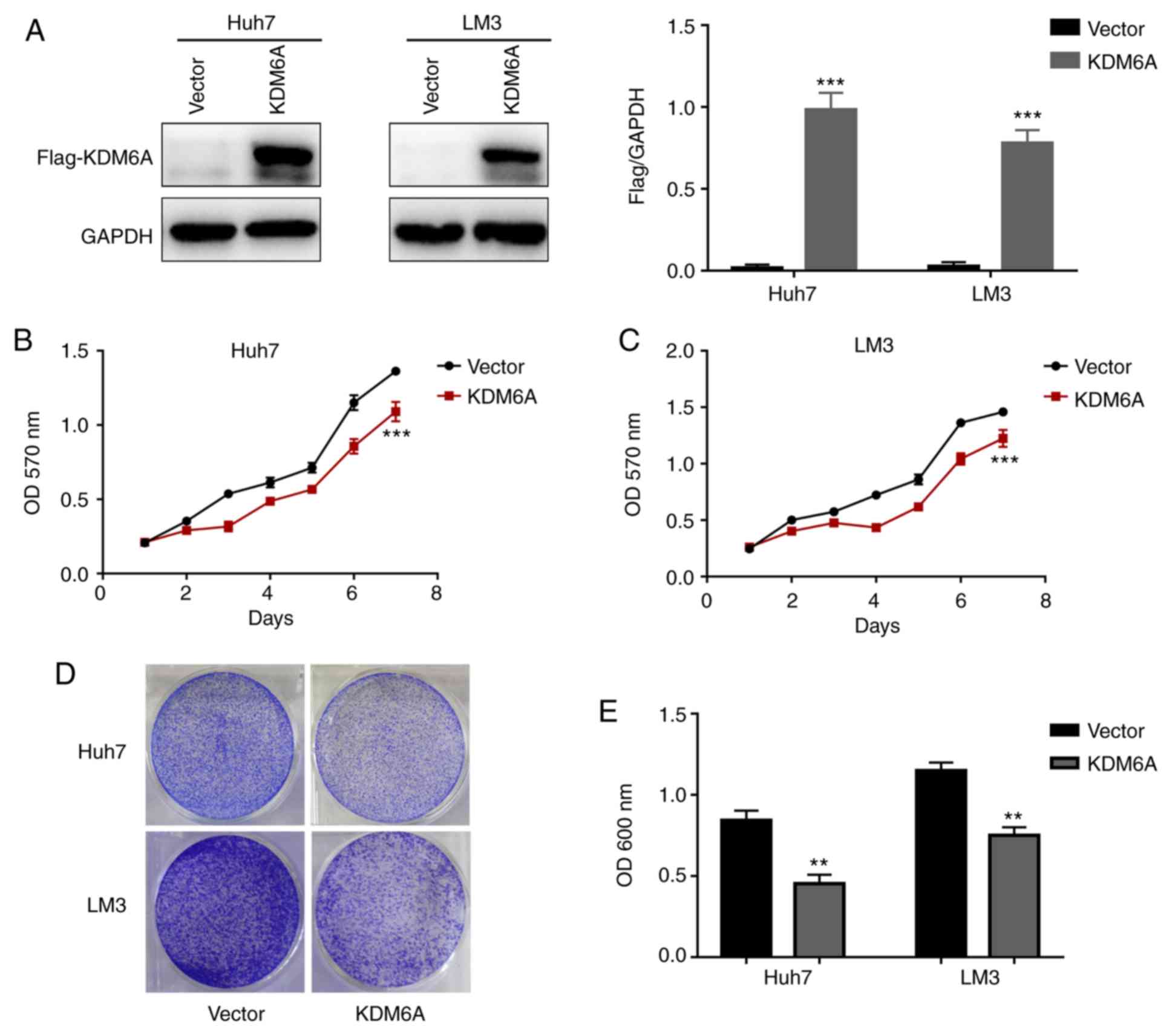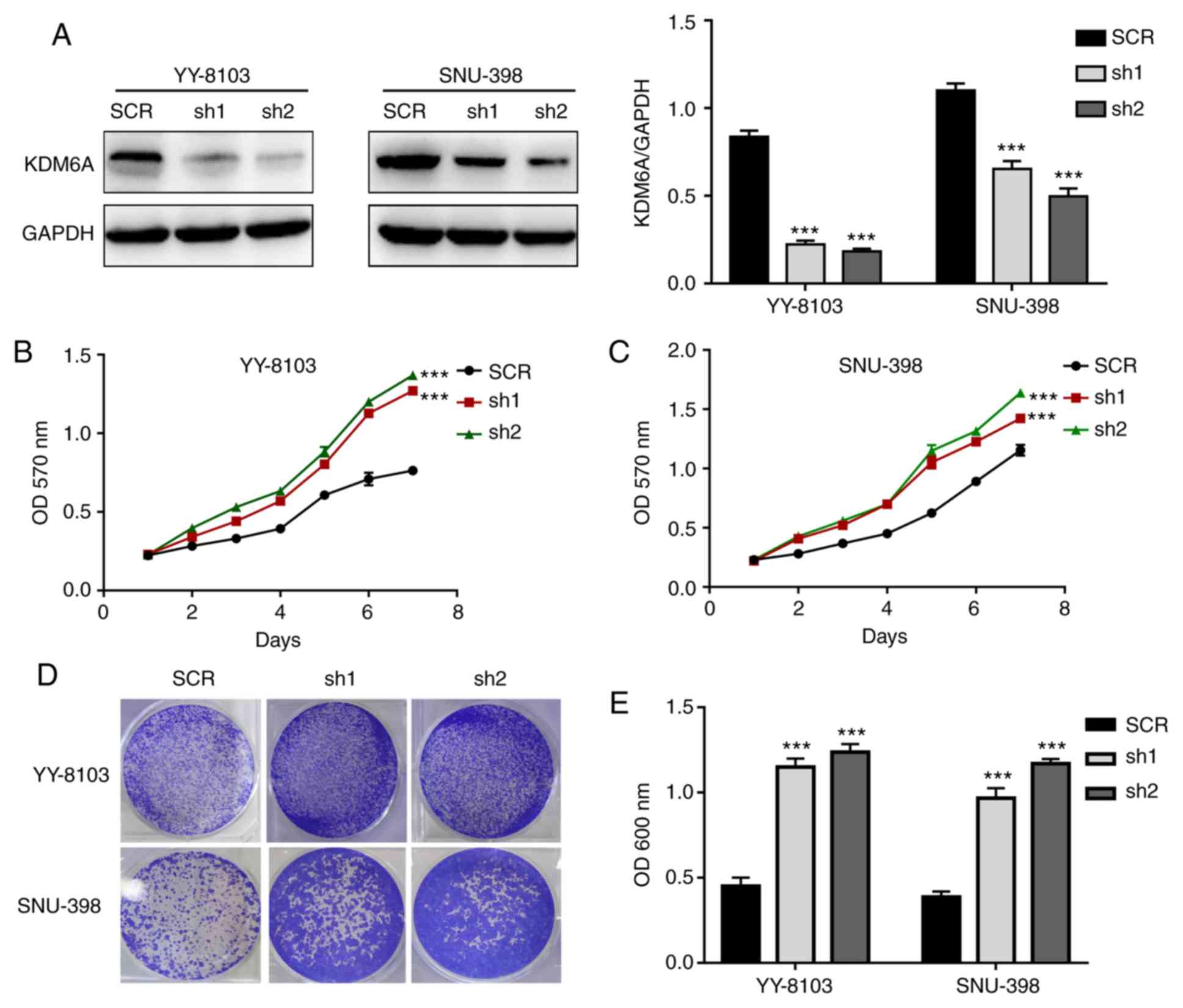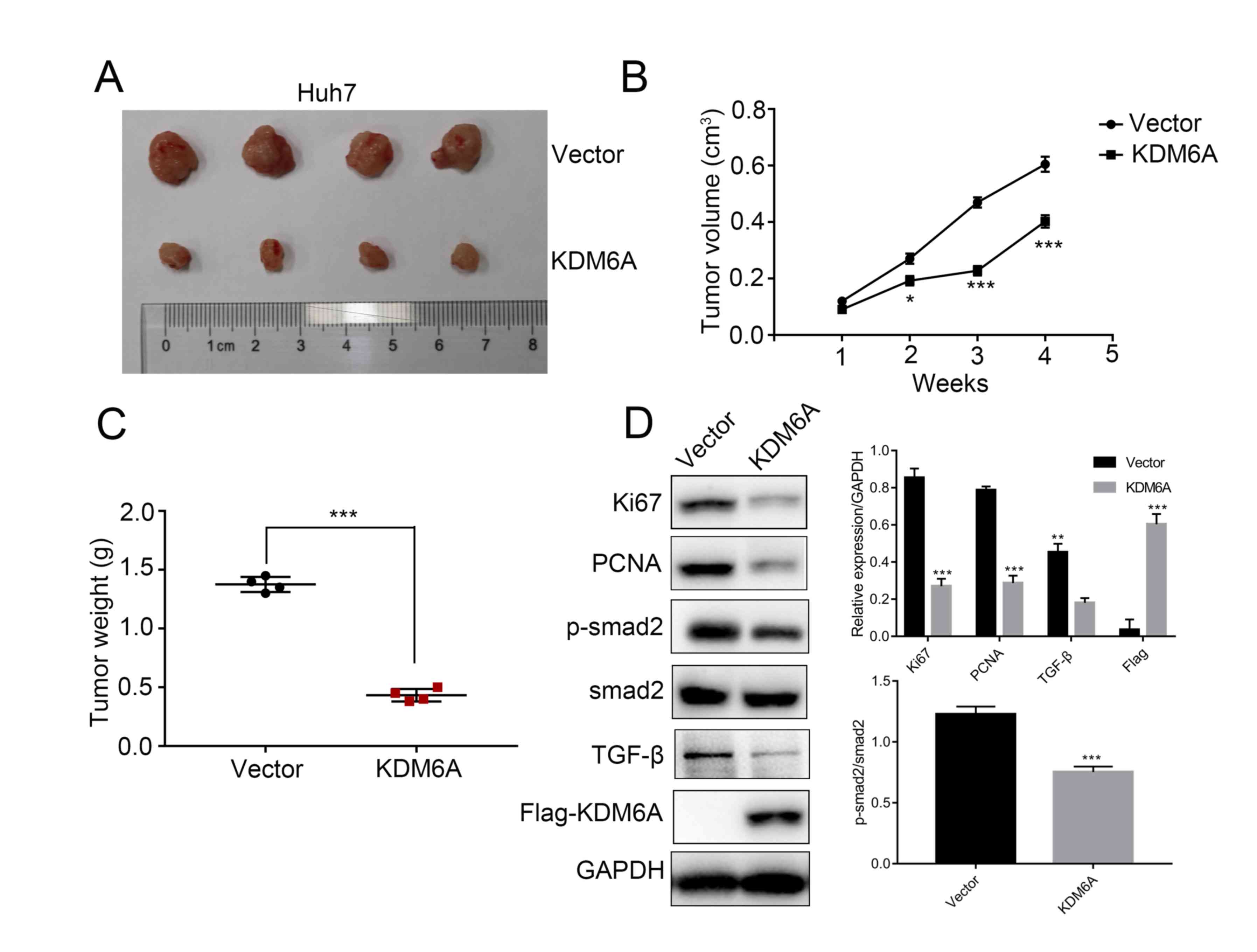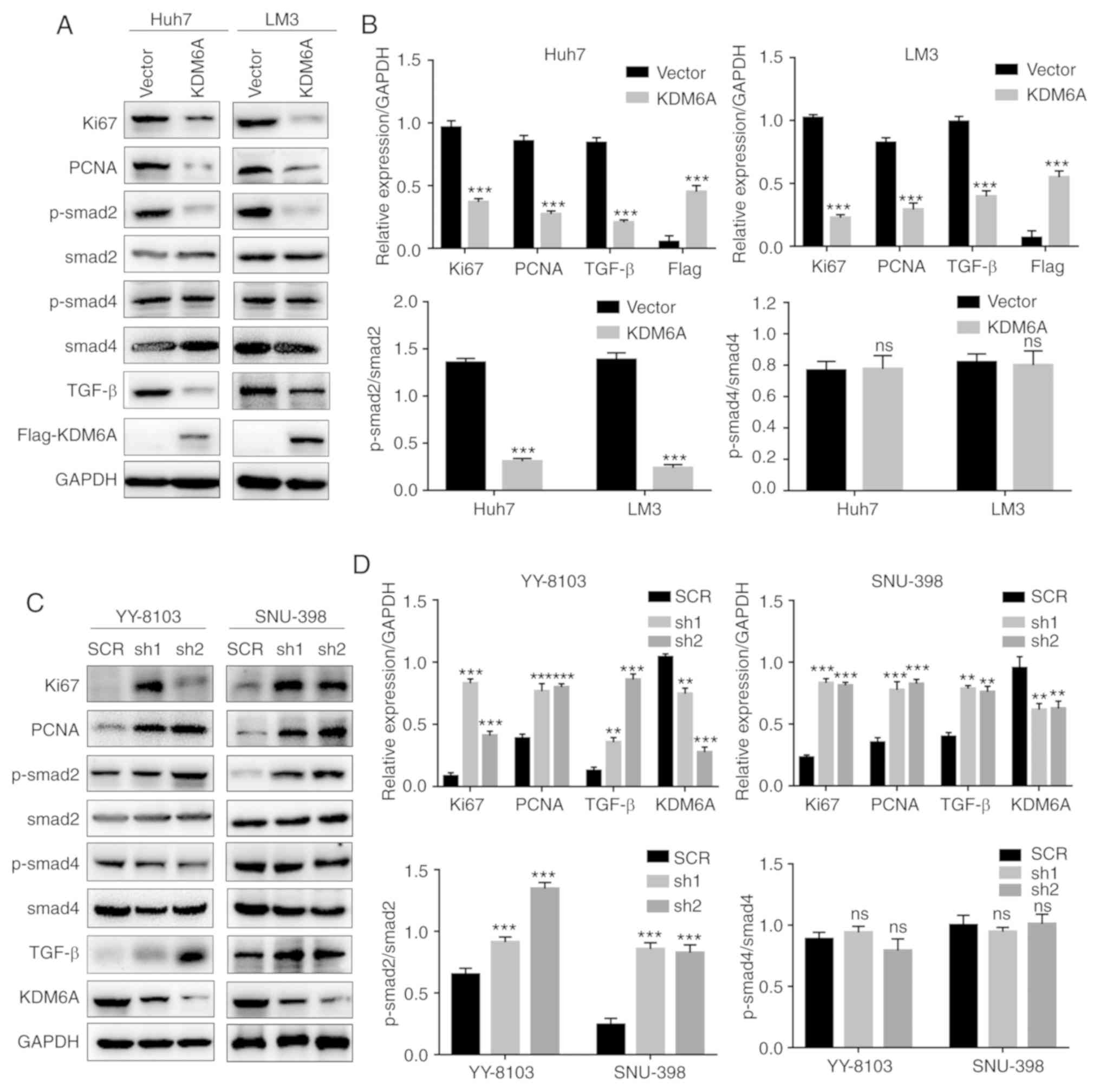|
1
|
European Association for the Study of the
Liver. Electronic address: easloffice@easloffice.eu; European
Association for the Study of the Liver. EASL Clinical Practice
Guidelines: Management of hepatocellular carcinoma. J Hepatol.
69:182–236. 2018.PubMed/NCBI View Article : Google Scholar
|
|
2
|
Lu XJ, Shi Y, Chen JL and Ma S:
Krüppel-like factors in hepatocellular carcinoma. Tumour Biol.
36:533–541. 2015.PubMed/NCBI View Article : Google Scholar
|
|
3
|
Yu WB, Rao A, Vu V, Xu L, Rao JY and Wu
JX: Management of centrally located hepatocellular carcinoma:
Update 2016. World J Hepatol. 9:627–634. 2017.PubMed/NCBI View Article : Google Scholar
|
|
4
|
Portolani N, Coniglio A, Ghidoni S,
Giovanelli M, Benetti A, Tiberio GA and Giulini SM: Early and late
recurrence after liver resection for hepatocellular carcinoma:
Prognostic and therapeutic implications. Ann Surgery. 243:229–235.
2006.PubMed/NCBI View Article : Google Scholar
|
|
5
|
Hu J and Gao DZ: Distinction immune genes
of hepatitis-induced heptatocellular carcinoma. Bioinformatics.
28:3191–3194. 2012.PubMed/NCBI View Article : Google Scholar
|
|
6
|
Marquardt JU, Galle PR and Teufel A:
Molecular diagnosis and therapy of hepatocellular carcinoma (HCC):
An emerging field for advanced technologies. J Hepatol. 56:267–275.
2012.PubMed/NCBI View Article : Google Scholar
|
|
7
|
Hong S, Cho YW, Yu LR, Yu H, Veenstra TD
and Ge K: Identification of JmjC domain-containing UTX and JMJD3 as
histone H3 lysine 27 demethylases. Proc Natl Acad Sci USA.
104:18439–18444. 2007.PubMed/NCBI View Article : Google Scholar
|
|
8
|
Lee MG, Villa R, Trojer P, Norman J, Yan
KP, Reinberg D, Di Croce L and Shiekhattar R: Demethylation of
H3K27 regulates polycomb recruitment and H2A ubiquitination.
Science. 318:447–450. 2007.PubMed/NCBI View Article : Google Scholar
|
|
9
|
Jiang W, Wang J and Zhang Y: Histone
H3K27me3 demethylases KDM6A and KDM6B modulate definitive endoderm
differentiation from human ESCs by regulating WNT signaling
pathway. Cell Res. 23:122–130. 2013.PubMed/NCBI View Article : Google Scholar
|
|
10
|
Schuettengruber B, Bourbon HM, Di Croce L
and Cavalli G: Genome Regulation by Polycomb and Trithorax: 70
Years and Counting. Cell. 171:34–57. 2017.PubMed/NCBI View Article : Google Scholar
|
|
11
|
van Haaften G, Dalgliesh GL, Davies H,
Chen L, Bignell G, Greenman C, Edkins S, Hardy C, O'Meara S, Teague
J, et al: Somatic mutations of the histone H3K27 demethylase gene
UTX in human cancer. Nat Genet. 41:521–523. 2009.PubMed/NCBI View
Article : Google Scholar
|
|
12
|
Terashima M, Ishimura A, Yoshida M, Suzuki
Y, Sugano S and Suzuki T: The tumor suppressor Rb and its related
Rbl2 genes are regulated by Utx histone demethylase. Biochem
Biophys Res Commun. 399:238–244. 2010.PubMed/NCBI View Article : Google Scholar
|
|
13
|
Watanabe S, Shimada S, Akiyama Y, Ishikawa
Y, Ogura T, Ogawa K, Ono H, Mitsunori Y, Ban D, Kudo A, et al: Loss
of KDM6A characterizes a poor prognostic subtype of human
pancreatic cancer and potentiates HDAC inhibitor lethality. Int J
Cancer. 145:192–205. 2019.PubMed/NCBI View Article : Google Scholar
|
|
14
|
Ler LD, Ghosh S, Chai X, Thike AA, Heng
HL, Siew EY, Dey S, Koh LK, Lim JQ, Lim WK, et al: Loss of tumor
suppressor KDM6A amplifies PRC2-regulated transcriptional
repression in bladder cancer and can be targeted through inhibition
of EZH2. Sci Transl Med. 9(eaai8312)2017.PubMed/NCBI View Article : Google Scholar
|
|
15
|
Andricovich J, Perkail S, Kai Y, Casasanta
N, Peng W and Tzatsos A: Loss of KDM6A activates super-enhancers to
induce gender-specific squamous-like pancreatic cancer and confers
sensitivity to BET inhibitors. Cancer Cell. 33:512–526.e8.
2018.PubMed/NCBI View Article : Google Scholar
|
|
16
|
Terashima M, Ishimura A, Wanna-Udom S and
Suzuki T: Epigenetic regulation of epithelial-mesenchymal
transition by KDM6A histone demethylase in lung cancer cells.
Biochem Biophys Res Commun. 490:1407–1413. 2017.PubMed/NCBI View Article : Google Scholar
|
|
17
|
Wang Y, Liu DP, Chen PP, Koeffler HP, Tong
XJ and Xie D: Involvement of IFN regulatory factor (IRF)-1 and
IRF-2 in the formation and progression of human esophageal cancers.
Cancer Res. 67:2535–2543. 2007.PubMed/NCBI View Article : Google Scholar
|
|
18
|
Qiu Z, Zou K, Zhuang L, Qin J, Li H, Li C,
Zhang Z, Chen X, Cen J, Meng Z, et al: Hepatocellular carcinoma
cell lines retain the genomic and transcriptomic landscapes of
primary human cancers. Sci Rep. 6(27411)2016.PubMed/NCBI View Article : Google Scholar
|
|
19
|
Vatandoost J and Kafi Sani K: A study of
recombinant factor IX in Drosophila insect S2 cell lines through
transient gene expression technology. Avicenna J Med Biotechnol.
10:265–268. 2018.PubMed/NCBI
|
|
20
|
Sikes RS: 2016 Guidelines of the American
Society of Mammalogists for the use of wild mammals in research and
education. J Mammal. 97:663–688. 2016.PubMed/NCBI View Article : Google Scholar
|
|
21
|
Zha L, Cao Q, Cui X, Li F, Liang H, Xue B
and Shi H: Epigenetic regulation of E-cadherin expression by the
histone demethylase UTX in colon cancer cells. Med Oncol.
33(21)2016.PubMed/NCBI View Article : Google Scholar
|
|
22
|
Choi HJ, Park JH, Park M, Won HY, Joo HS,
Lee CH, Lee JY and Kong G: UTX inhibits EMT-induced breast CSC
properties by epigenetic repression of EMT genes in cooperation
with LSD1 and HDAC1. EMBO Rep. 16:1288–1298. 2015.PubMed/NCBI View Article : Google Scholar
|
|
23
|
Dai J, Xu M, Zhang X, Niu Q, Hu Y, Li Y
and Li S: Bi-directional regulation of TGF-β/Smad pathway by
arsenic: A systemic review and meta-analysis of in vivo and in
vitro studies. Life Sci. 220:92–105. 2019.PubMed/NCBI View Article : Google Scholar
|
|
24
|
Derynck R and Zhang YE: Smad-dependent and
Smad-independent pathways in TGF-beta family signalling. Nature.
425:577–584. 2003.PubMed/NCBI View Article : Google Scholar
|
|
25
|
Wrana JL, Attisano L, Wieser R, Ventura F
and Massagué J: Mechanism of activation of the TGF-beta receptor.
Nature. 370:341–347. 1994.PubMed/NCBI View
Article : Google Scholar
|
|
26
|
Moses HL, Roberts AB and Derynck R: The
discovery and early days of TGF-β: A historical perspective. Cold
Spring Harb Perspect Biol. 8(a021865)2016.PubMed/NCBI View Article : Google Scholar
|
|
27
|
Derynck R, Akhurst RJ and Balmain A:
TGF-beta signaling in tumor suppression and cancer progression. Nat
Genet. 29:117–129. 2001.PubMed/NCBI View Article : Google Scholar
|
|
28
|
Pasche B: Role of transforming growth
factor beta in cancer. J Cell Physiol. 186:153–168. 2001.PubMed/NCBI View Article : Google Scholar
|
|
29
|
Elliott RL and Blobe GC: Role of
transforming growth factor Beta in human cancer. J Clin Oncol.
23:2078–2093. 2005.PubMed/NCBI View Article : Google Scholar
|















